What are the odds of dying in an earthquake?
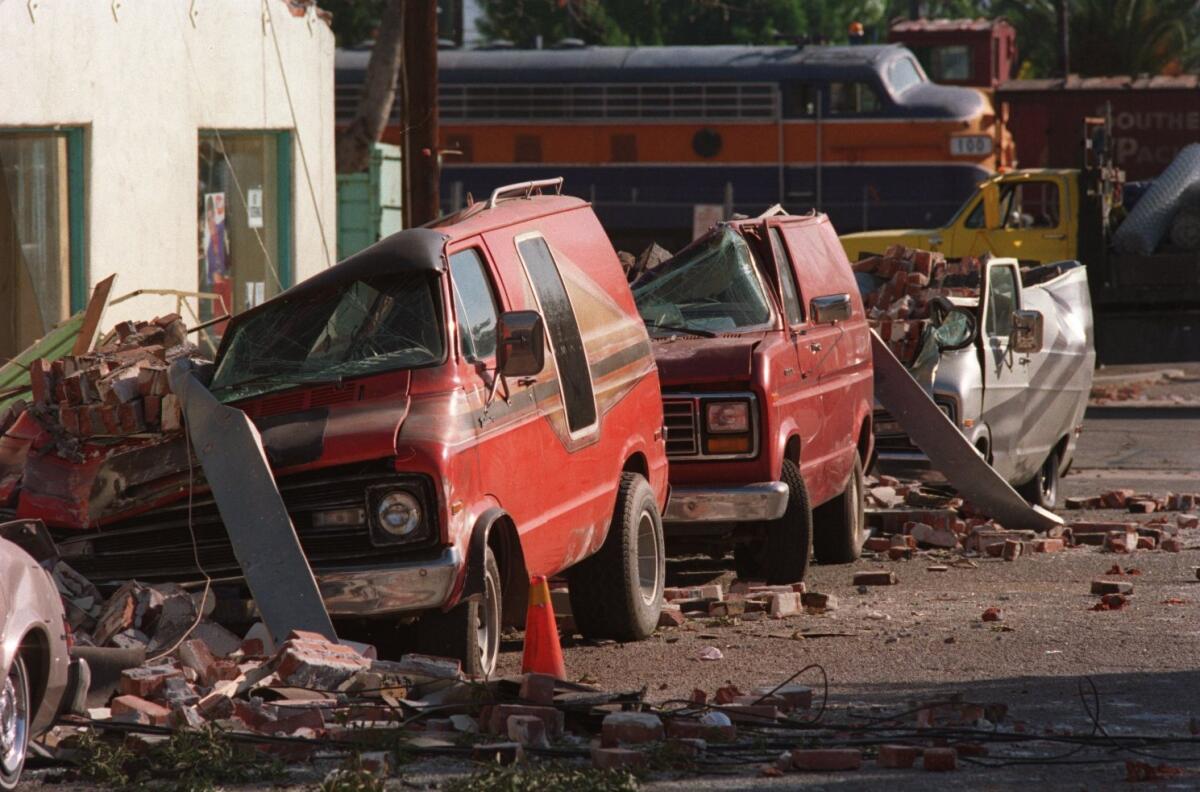
It's easy to be anxious about an earthquake. A leading seismic expert recently warned that Southern California's section of the San Andreas fault is "locked, loaded and ready to roll."
But experts also say it's important to keep perspective: The chances of dying in a large temblor are actually quite small.
“You’re about as likely to be shot by a toddler than die in an earthquake,” seismologist Lucy Jones said recently at the National Earthquake Conference in Long Beach.
Jones made the comments as a call for people not to be frozen by fear of a future earthquake — but know they’re far more likely to survive. That's why it's so important to quake-proof your home as best as you can, and keep bookcases from falling on beds and the house from sliding off the foundation.
“We’re afraid of earthquakes because they make us feel out of control. We can’t control the earthquake, but you can control your environment,” Jones said. “So take control — by making your environment a safe place to be in an earthquake.”
We’re afraid of earthquakes because they make us feel out of control ... so take control — by making your environment a safe place.
— Seismologist Lucy Jones
What is the risk of dying in a California earthquake?
Jones said the risk of dying in a California earthquake comes at a rate of about 40 deaths per year over, say, a century.
That’s in the same range as the number of Americans shot by toddlers in 2015 — which came to about a rate of once a week, according to a report in the Washington Post.
How does that compare with the risk of dying by lightning?
Americans have a higher chance of dying by being hit by lightning — about 75 are killed a year by such strikes, Jones said.
More Southern Californians have died in rain-related natural hazards, like landslides, flooding and debris flows, than in earthquakes, she added.
“So we are talking very, very rare,” Jones said.
What's the risk of being murdered compared with the risk of dying in an earthquake?
Put another way, the lifetime risk of dying in an earthquake is no higher than 1 in 20,000. The lifetime risk of being murdered? 1 in 1,000. And the lifetime risk of dying in a traffic accident? 1 in 100.
“You’re far more likely to be murdered than die in an earthquake,” Jones said.
It’s understandable why people can be frightened — we fear randomness, Jones said. “It’s the fact that you can’t predict it, that you don’t know when it’s going to be coming.”
But you can make your home much safer. Here are five ways to do so, and more details can be found at earthquakecountry.org
Five ways to make your home safer:
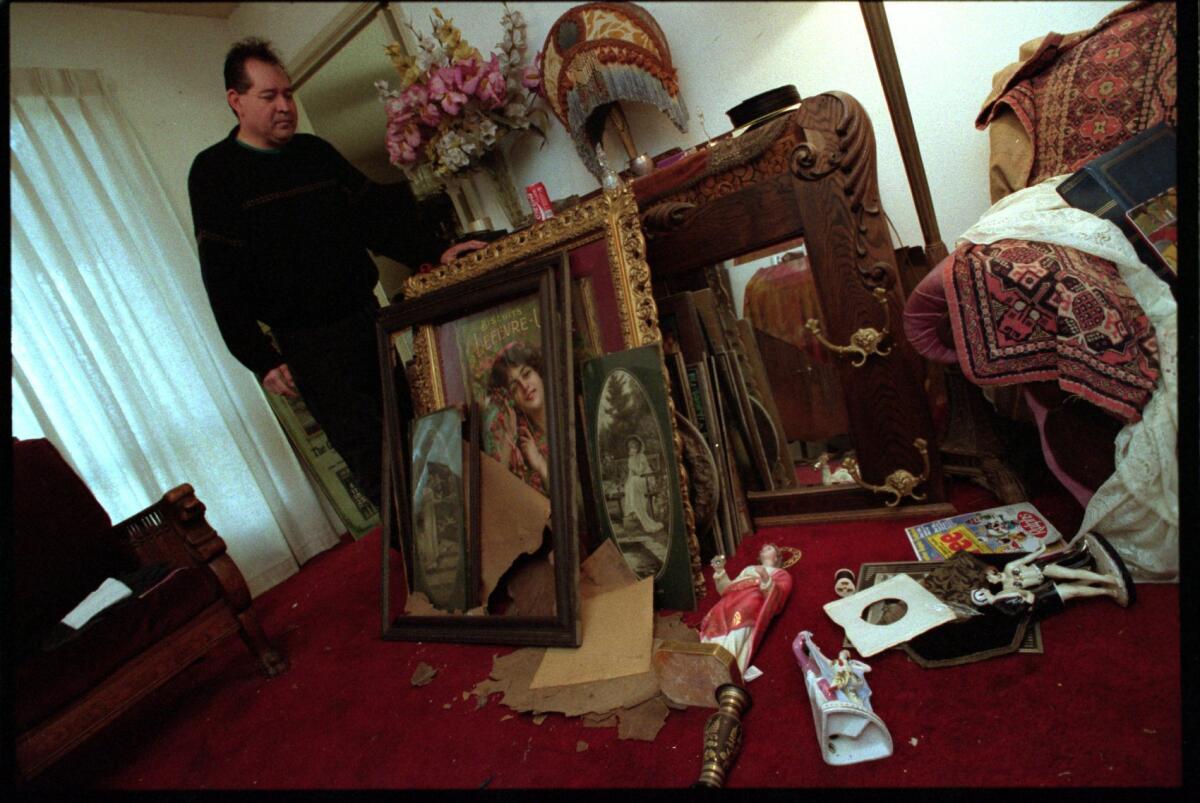
1. Work on your home.
♦ Go to a hardware store and find the tools you need to strap bookshelves to the wall, televisions to their stands and microwaves on countertops. People have died in past earthquakes after microwaves and televisions struck them.
♦ Install safety latches on kitchen cabinets — like the kind used to keep toddlers out — to keep blenders and plates from toppling on you.
♦ Use earthquake putty or museum wax to secure picture frames and vases to tabletops.
♦ Remove anything that could fall on your bed, like heavy frames or bookcases.
♦ Move your bed away from windows, which can shatter and cause cuts.
♦ Use earthquake-resistant picture hooks to keep frames from crashing in earthquakes.
♦ Don’t use glass to cover pictures in the hallway. This is something Jones avoided so that her children, when they were younger, “could get to us without having to cross [broken] glass.”
♦ Make sure your gas heater is secured to the wall. Know how to turn off the gas entering your house, and that a wrench to do it is tied to the valve.
♦ Consider installing an automatic valve that shuts off the gas when shaking arrives in an earthquake, reducing the risk of a broken gas line igniting a fire.
♦ Get a fire extinguisher or two, know where they are. Make sure everyone at home knows how to use them.
♦ Get emergency plug-in lights that automatically turn on during a power outage.
2. See if your home needs a retrofit.
♦ Own a home? Hire a foundation specialist to see if anything needs to be done, such as bolting your home to the foundation so it doesn’t slide off in an earthquake. A $4,000 retrofit job now could head off a $400,000 repair job after the earthquake.
RELATED: Retrofitting pre-1979 homes can prevent much costlier quake damage
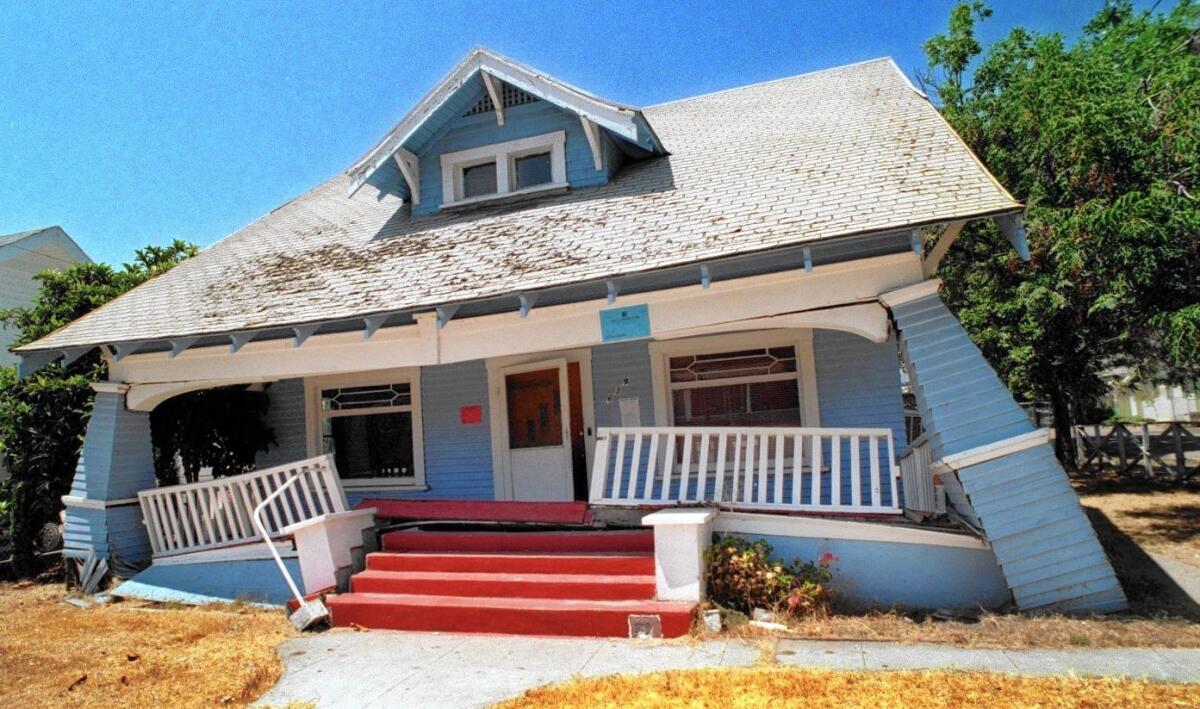
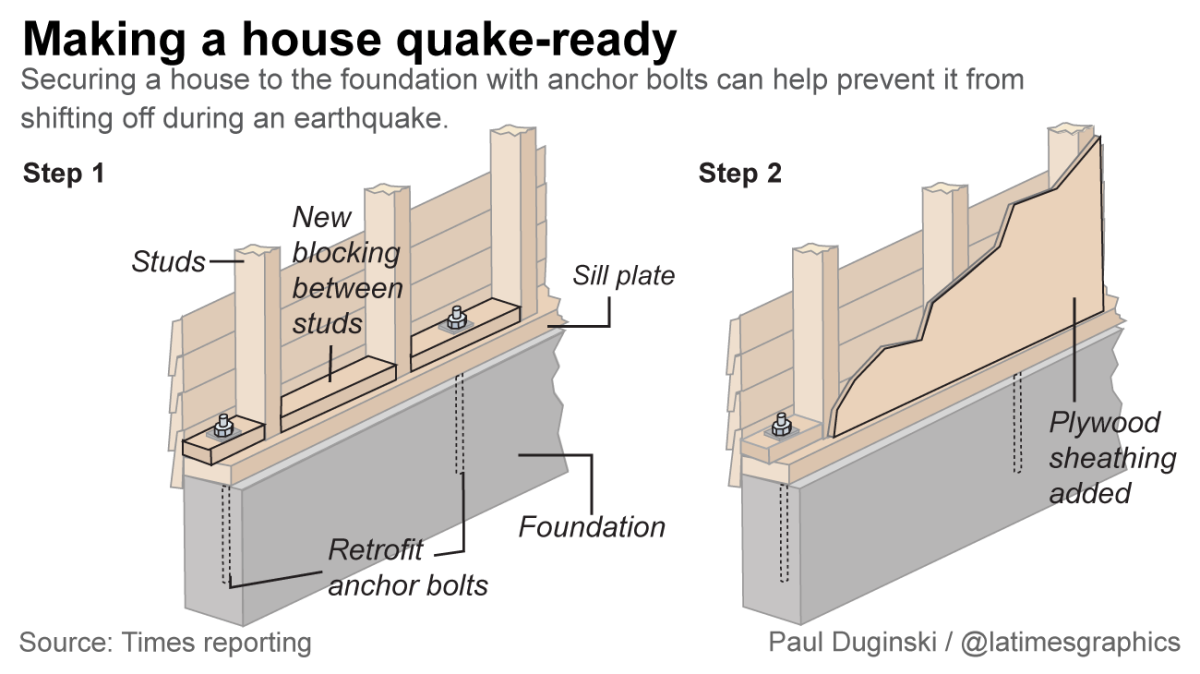
♦ Also, consider the risk of your chimney.
Chimneys are a notorious risk in earthquakes, in which bricks come flying off during shaking. There are some retrofit options, but some experts say the safest way to deal with the hazard is to remove them. (Jones said she wants to remove the chimney in her home.)
In the 1992 Landers earthquake that struck the Mojave Desert, a 3-year-old boy in a sleeping bag next to the fireplace died after the upper half of the chimney came crashing down and struck him in the head. In another earthquake — a 5.2 temblor that hit Napa Valley in 2000 — a 5-year-old boy was left fighting for his life after he was buried by the fireplace during a birthday party sleepover. He survived, but underwent more than two dozen operations.
Even the lower half of a chimney can be a problem. A 13-year-old boy was struck by falling bricks from his chimney during a sleepover during the 2014 Napa earthquake. His pelvis was broken in six places.
RELATED: Often overlooked, brick chimneys pose hazards in quakes
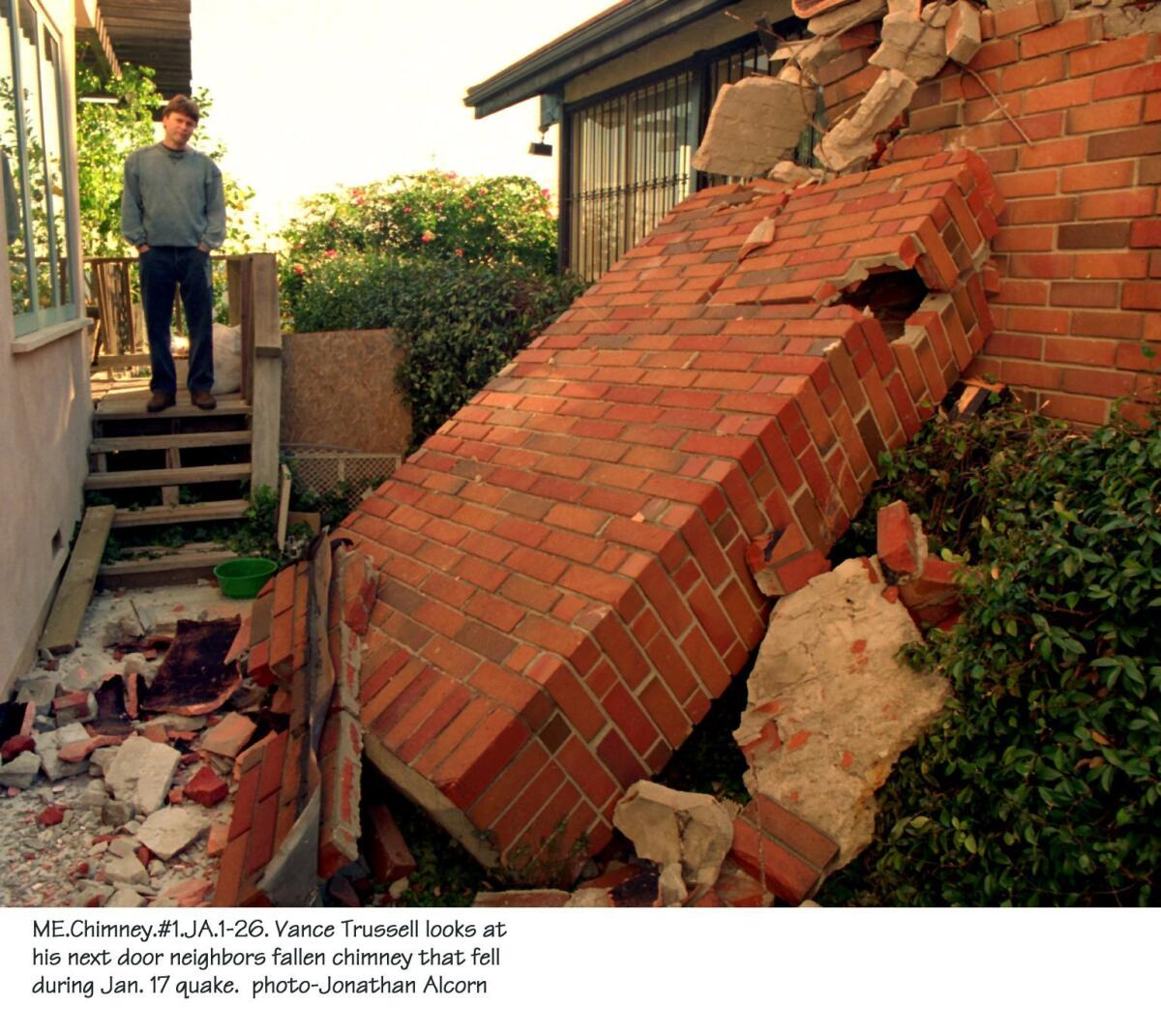
♦ Also, many wood apartment buildings across California have a vulnerability — car spaces on the ground floor, held up by skinny, flimsy columns that can collapse in an earthquake.
San Francisco and Los Angeles have laws in place to require retrofits, but most other local governments do not. Owners and renters should be aware of this vulnerability, and experts say a retrofit will save lives; an apartment complex with this problem killed 16 people on the ground floor of an apartment building during the 1994 Northridge earthquake.

DATABASE: Do you know if your L.A. apartment is at risk in an earthquake?
3. Drop, cover and hold on when an earthquake hits
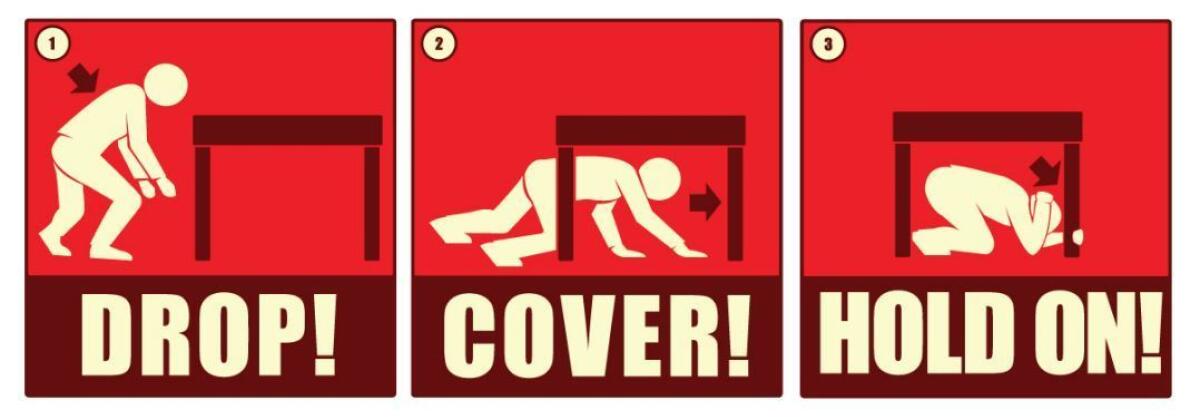
California natives know this drill well: During an earthquake, drop to the floor and cover your neck and head with your hands, and get underneath a table and hold on!
Running out of the building is not a good idea, experts say, as the exterior of a building is one of the most dangerous places to be as objects fall.
During the 2003 Paso Robles earthquake, bricks came crashing down on two women fleeing the building; experts say if they had stayed inside, they would have survived.
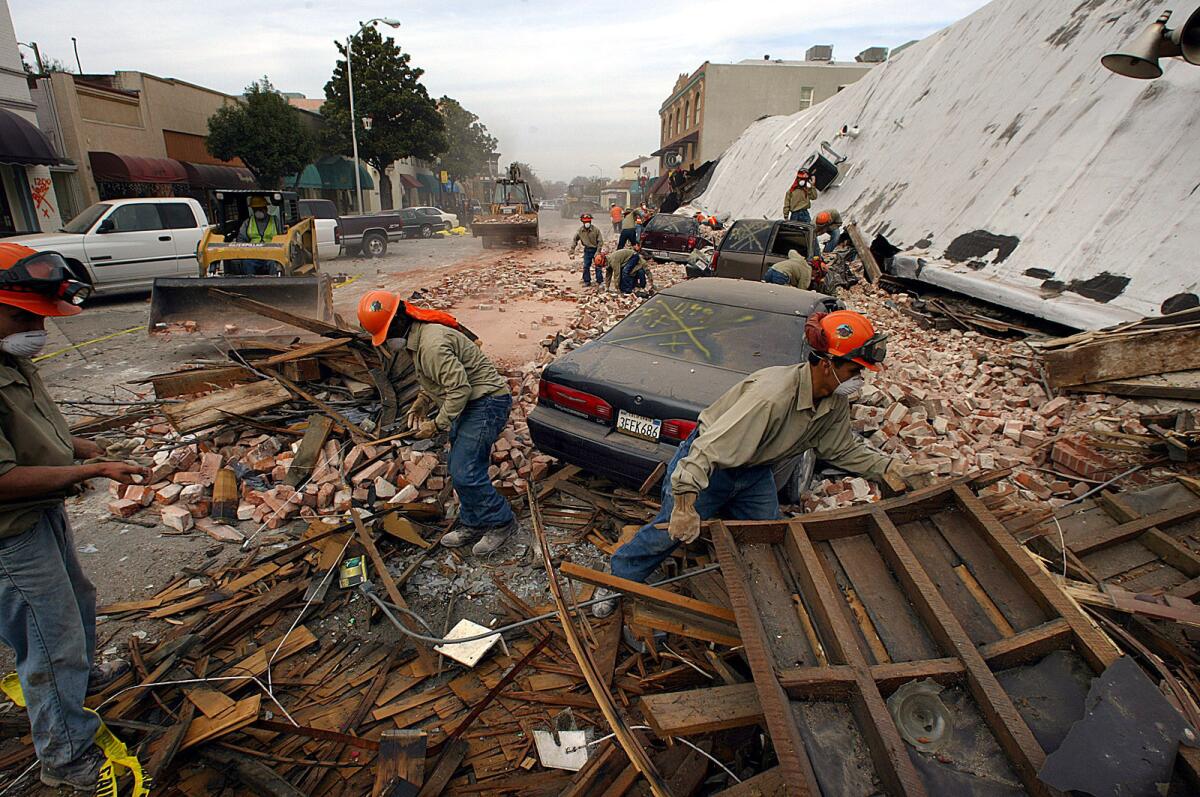
In the Mexico City earthquake of 1985, desks remained standing at one building even as the ceiling caved in.
What happens if you can't get under a desk? Get as low as possible, protect your head and neck, and move away from windows or other items that can fall on you. Here are more detailed instructions, via EarthquakeCountry.org:
♦ In a bed: Hold on and stay there, protecting your head with a pillow. Running is a bad idea — it's easy to get cut on broken glass on the floor.
♦ In a high-rise: Drop, cover, hold on. Avoid windows. Don't use elevators.
♦ In a theater or stadium: Stay in your seat or drop to the floor between rows, and protect your head, neck and arms. Don't try to leave until the shaking is over.
♦ In a store: Drop and take cover under anything that can provide protection, like a shopping cart or inside clothing racks. If you need to move away from heavy items on high shelves, drop to the ground first and crawl the shortest distance away. Whenever you enter a retail store, take a moment to see what could fall on you during an earthquake.
♦ Outdoors: Move to a clear area if you can safely do it. Avoid power lines, trees, signs, buildings and vehicles.
♦ Near the shore: If severe shaking lasts 20 seconds or more, head to high ground in case a tsunami has been generated. Move inland two miles or to land that is 100 feet above sea level. Don't wait for a warning, start walking. And don't drive, to avoid traffic.
4. Get a kit together
♦ Pack food, water, medicine and anything else you’d need for at least 72 hours, and maybe even longer.
RELATED: More details at earthquakecountry.org
♦ Consider keeping your car’s fuel tank half full or three-quarters full at all times. A power outage will make it impossible to get fuel.
♦ Have a wad of cash that includes small bills at home.
♦ If your food kit includes canned food, make sure you have a manual can opener.
♦ Place some old shoes near your bed and tie them down, to avoid walking on broken glass. Also, keep an extra pair of keys and eyeglasses if you need them.
RELATED: Is your home earthquake-ready? How to prepare for the Big One
5. Consider earthquake insurance, and find out more about the hazards near your home.
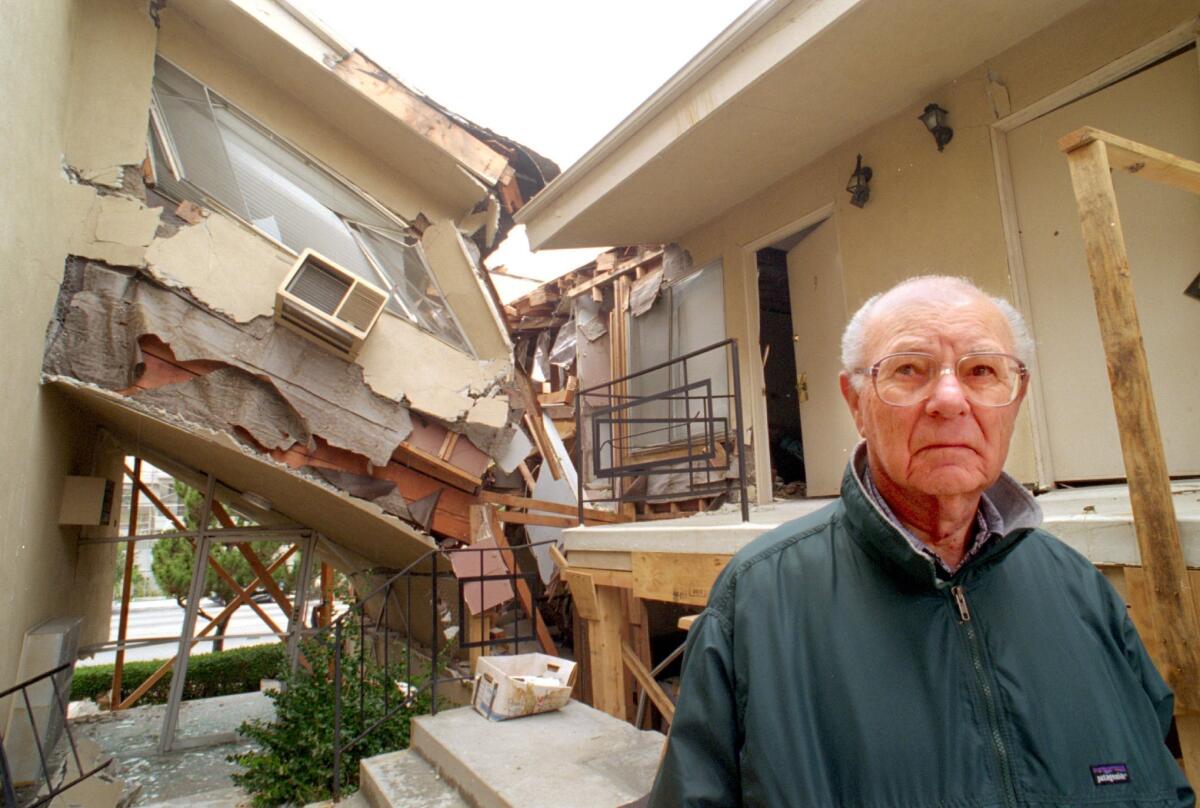
♦ Earthquake insurance can give homeowners the ability to have the funds to repair their homes quickly after a massive disaster; a typical homeowner policy won’t do so.
♦ Renters, too, can benefit, particularly if a disaster leaves their apartment uninhabitable; earthquake insurance can cover the cost of temporary housing.
♦ And find out more about the fault and liquefaction and landslide hazards close to your home. One free website, www.temblor.net offers users a look at nearby earthquake faults and locations of liquefaction and landslide hazards as mapped by state officials.
Twitter: @ronlin
Sign up for Essential California
The most important California stories and recommendations in your inbox every morning.
You may occasionally receive promotional content from the Los Angeles Times.








